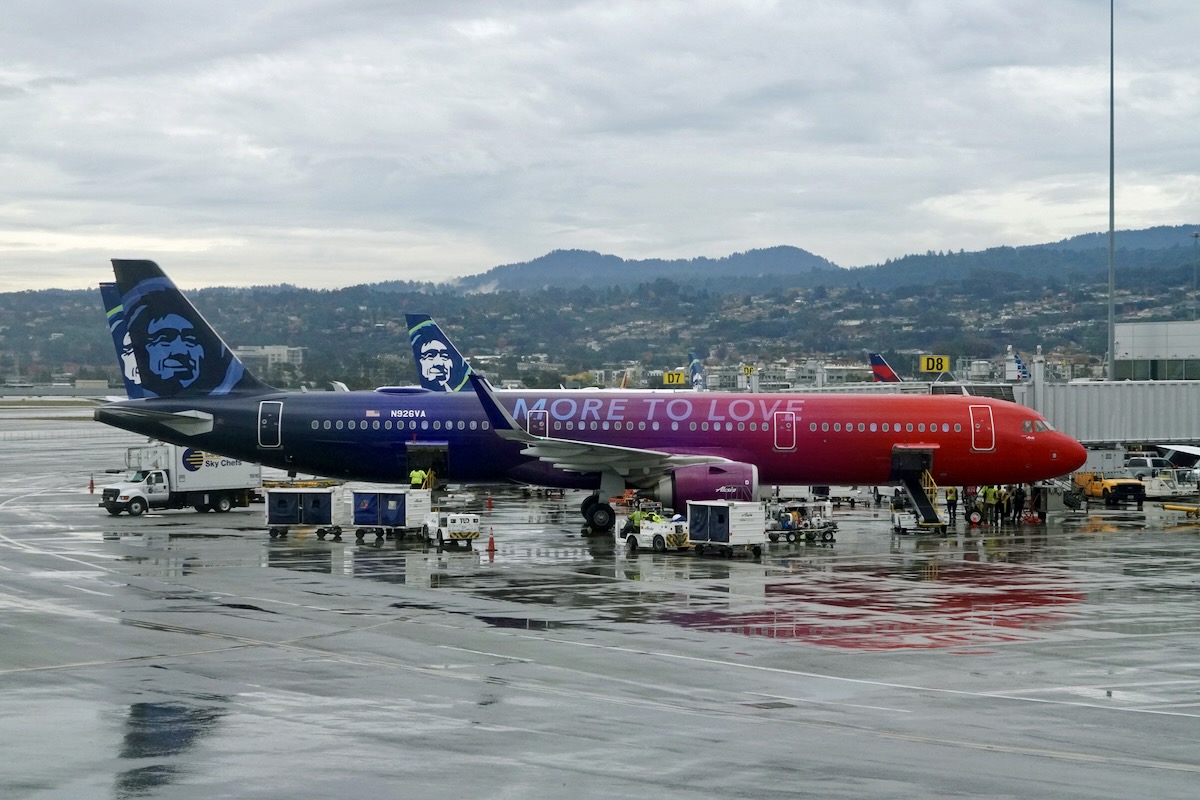Alaska Airlines Retires A321neos, Dash 8s For Efficiency

Photo Credit: Alaska Airlines will retire its A321neos and go to an all-Boeing fleet in 2023. Flickr / Luke Lai
Alaska Airlines is speeding up its transition to an all-Boeing fleet with new plans to retire the Airbus A321neo aircraft it inherited from Virgin America early. And in unexpected news, the Seattle-based carrier will also retire the De Havilland Dash 8-400s in favor of an all-Embraer E175 regional fleet.
Alaska will operate a fleet of 323 737s and E175s by the end of 2023, and plans to grow to 400 aircraft by the middle of the decade. The airline said the fleet simplification will help drive down costs and streamline maintenance. "The quicker we could get to a single fleet, the better," Chief Financial Officer Shane Tackett said earlier this month. He added that a simplified fleet could help realize $50-70 million in annual costs savings.
"One fleet is way simpler than two fleets to operate," he said. The carrier also will benefit from staffing simplicity, with no need for reserve Airbus crews.
Alaska has long made clear it wanted to get rid of the 71 Airbus aircraft it gained through its 2016 acquisition of Virgin America. It removed the 31 A319s and A320s during the pandemic, and has replaced them with new Boeing 737-9s that began arriving last January. The airline will return the remaining 30 A320s it inherited from Virgin America by early 2023 at the latest. Alaska cancelled its longstanding order for 30 A320neos finally late last year.
The fate of the 10 A321neos has long been unclear. For a time, Alaska said it valued the range and capability of the A321 for certain missions, for example on flights between the West Coast and slot-constrained airports like Washington National. But it recently changed course. "I would not be surprised if we found a home for those [A321s] before the lease expiry," Tackett said earlier in March.
Alaska has found, or is confident that it will find, a home for the jets that have leases through 2030. With the March 24 announcement, the carrier signaled it will return the aircraft to lessors up to seven years early. "The A321 is a great airplane," Nathaniel Pieper, senior vice president of fleet and alliances, said on March 24. "There will be a pretty good market for it."
Lessors have signaled strong demand for aircraft, particularly the A321neo that has emerged as the de facto replacement for the Boeing 757. Airbus executives recently said their backlog stretches out 10 years limiting the availability of popular jets like the A321neo in the near term.
Alaska's deliveries of new Maxes will offset the retirements. In fact, Tackett said the carrier is net upgauging across its fleet, especially with the 189-seat 737-10 that has just one less seat than A321neos. The 150-seat A320 fleet will mostly be replaced with 178-seat 737-9s.
The regional fleet changes follow the same strategy Alaska is pursuing for its mainline operation: "simplicity," Pieper said. Its Horizon Air subsidiary will retire its last 32 Dash 8s in 2023 with the aircraft replaced by 20 new E175s. Alaska has not specified whether Horizon or affiliate SkyWest Airlines will operate the new jets.
Alaska's fleet changes are not limited to passenger aircraft. The airline is adding two converted Boeing 737-800 freighters, expanding its cargo fleet to five aircraft.
The airline plans to grow capacity by 1-3 percent this year compared to 2019, the low end of its January guidance. But going forward, Alaska will grow organically by 4-8 percent annually through 2025 even with its fleet changes. The majority of that growth, roughly 70 percent, will be in its home Pacific Northwest markets with the balance touching California.
Additional reporting by Edward Russell.
The story was updated to remove a reference to BOC Aviation as the lessor of Alaska's A321neos.
